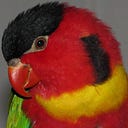Watch: Weird and wonderful butterflies in the Cal Academy Collection
A glimpse at Cal Academy’s butterfly collection and a discussion about why these butterfly collections are important to science
by GrrlScientist for The Guardian | @GrrlScientist
(Credit: Kings Rarities Butterflies; “Beautiful Gynandromorph”.)
Do you like butterflies and moths? I certainly do. When I was a graduate student, part of my graduate training was invested into studying moths. So captivated by moths and butterflies was I that I seriously considered devoting my professional career to studying them.
Butterflies and moths — the lepidopterans — are more than just pretty insects that pollinate plants. They are important research subjects that provide valuable glimpses into evolutionary processes. They provide scientists with important insights into sexual selection, speciation, and the relationship between ecology and evolution and between genetics and evolution.
One important resource for studying lepidopterans is museum collections. The California Academy of Sciences is home to the largest collection of biological reference materials west of the Mississippi. Dating back over 100 years, the collection provides a treasure trove of biological information for scientists and researchers studying the natural world. Of the 20 million specimens housed at the Cal Academy, 17 million are insects in the Entomology Department. In this fascinating video, Collections Manager Norman Penny shares a small peek at The Academy’s vast butterfly collection, and as a special treat, he shows us an extremely rare gynandromorph — a half male half female butterfly:
The California Academy of Sciences is on facebook and twitter @calacademy
Read more butterfly science:
GrrlScientist. “DNA Barcodes Reveal Two Distinct Butterflies Are Male And Female Of Same Species”, Forbes, 4 August 2017. (Medium link.)
GrrlScientist. “Fragmented Habitats Accelerate Butterfly Evolution — And Extinction”, Forbes, 25 February 2016. (Medium link.)
GrrlScientist. “Birth of the blue morphos”, The Guardian, 13 April 2015. (Medium link.)
GrrlScientist. “Why does this butterfly hiss?”, The Guardian, 3 February 2014. (Medium link.)
GrrlScientist. “Watch: A century of butterflies and moths”, The Guardian, 14 August 2012. (Medium link.)
GrrlScientist. “Watch: How to fix a broken butterfly wing”, The Guardian, 30 November 2011. (Medium link.)
GrrlScientist. “Watch: Supergene controls butterfly mimicry”, The Guardian, 18 August 2011. (Medium link.)
GrrlScientist. “The hot and cold of butterfly dancing”, The Guardian, 1 February 2011. (Medium link.)
.. .. .. .. .. .. .. .. .. .. .. .. .. .. .. .. .. .. .. .. .. .. .. .. .. .. .. .. .. .. .. .. .. .. .. .. .. .. .. .. .. .. ..
GrrlScientist is very active on twitter @GrrlScientist and you can follow all her writing by subscribing to her TinyLetter
Originally published at The Guardian on 26 April 2012.
